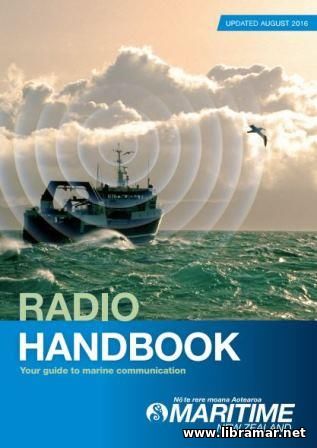 This is the informative handbook with the content initially aimed to serve as the accessible practical guide for use by the shipboard radio operators as well as shore-based radio stations, particularly operators of the VHF and SSB, i.e. MF/HF radios. It will provide all readers with the required technical info about the radiotelephony procedures, coverage and appropriate use of the cell phones, terms and contacts, and how exactly SAR is being managed in New Zealand.
The information presented in the handbook has been arranged in five major chapters. The first one has been dedicated solely to the radiotelephony procedures including prowords, i.e. procedural words, VHF channels, SSB frequencies, silence period etc., while the second one addresses the coverage and services including broadcasts and warnings, medical advice, sat safety services etc.
The third chapter provides other important information including the medical evacuation, working with choppers, transmissions in harbor, testing the radios, sea rescue by choppers etc. Two remaining chapters of this handbook are providing the useful contacts plus contain a small yet comprehensive Glossary of the terms used in this handbook and generally in the industry.
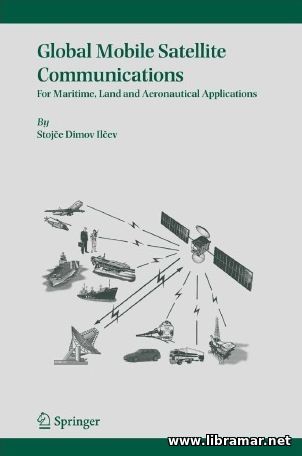 The GMSC deal with in the pages of the present book are technically specific systems utilizing the satellite communication principle and commonly installed not only for maritime but also for land/aeronautical applications. Subject systems enable the connections between various moving objects including vessels, aircrafts and all others, plus between subscribers to telecommunications through the satellites, PTT, ground earth stations etc.
The technology of such systems has actually been in active use for decades but the last years have shown rapid development and new initiatives that are now resulting in several new practical applications of the technology. This volume is very important for the contemporary shipping industry taking into account that the GMSC today is providing much more effective trade/business, focusing on the safety of the shipping plus on the commercial communications.
The content was prepared to provide necessary bridges between readers and current trends in GMSC, network architecture and concepts of the mobile systems using the understandable information, supplemented with the graphicons and characteristics of the equipment, mat equations and informative colorful illustrations, making it practical for the technical staff of the ships operating both at sea and rivers...
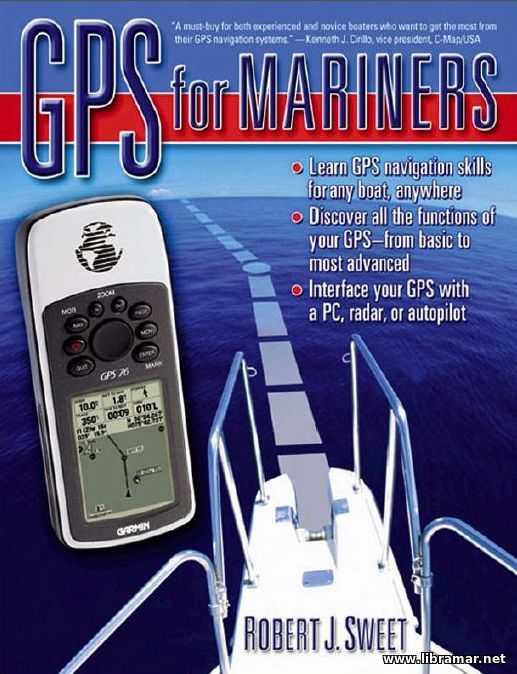 This excellent guide will help all mariners to properly use their GPS equipment when navigating the rivers and lakes, as well as the coastal waters. The first four chapters of the volume have been designed to tell the readers about the fundamentals of GPS, while the in the rest of the content Robert Sweet is going into more details for utilization of the GPS for navigation.
One of the features appreciated by the readers of the book was that the information presented could also be applied by the people absolutely unfamiliar with the system. The book is very easy-to-read, informative but not too technical, providing all required information but remaining reader-friendly. It is a really great instructional book for all people willing to be self-sufficient when navigating their boats. The information will be easy to understand for the regular boat owners; and more professional sailors can use the book as a refresher or when providing the trainings to the beginners as the book contains lots of illustrations with practical and informative tips for the boats.
The navigation methodology used in the publication is sound and the content has been found to be well-organized. The concise and very clear advice related to the installation and initialization of the GS units on the boats, their usage and operation, and interpretation of the information obtained from the unit, will be very useful for every boater, from absolute novices to the professionals.
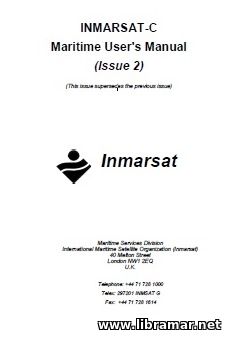 The pages of the present document are intended to summarize how exactly the mariners can send distress calls in case of a danger. The readers shall get familiarized with the procedures contained in this volume prior to the use. The Manual provides readers with a wealth of relevant information, essential, useful and technical.
The essential information will tell the readers what they shall e aware of in order to be able to operate their Inmarsat-C SES in a proper way; the useful information provides them with some more detail about some of the technical aspects of the system. In turn, the technical information describes for the SES is working within Inmarsat-C.
The book starts with the intro to the Inmarsat-C satcom system, followed by the chapters dedicated to the commissioning of the system and preparation to use, safety and distress service, accessibility of the system and data reporting, technical description and CES information and other relevant and useful information and data. There is a comprehensive yet concise glossary.
The information contained in the volume will definitely be of assistance to the people involved in the operation of the Inmarsat equipment, including shipboard radio operators, students of marine colleges, radio maintenance and service specialists and all other people with the interest in maritime radio communications.
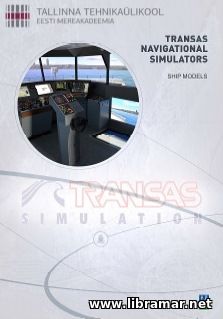 Quite self-explaining title. The ship models for the TRANSAS navigational simulators. A perfect collection containing sixty-three ships, including ABB azipod cruiser, bulk carriers of different displacement, car carriers, arctic shuttle tanker, chemical tankers, coast guard boat, coastal tankers, container ships of different displacement, crude oil tanker, fast ferry, feeder container ship, FPSO, flo-flo ship, harbor tug, high speed ferry, IMO 992, LNG carrier, lo-ro ship, lots boat, motor yachts, offshore rescue vessel, oil tanker, offshore supply vessels, oil tanker, passenger car ferries, passenger cruise ship, patrol boat, river-sea ships of different displacement, ro-ro ferries of different displacement, shuttle tankers, semi-submersible, trawler, VLCC, standing for the very large crude carrier, ASD tugs, icebreaking tug, conventional twin-screw tugs, azimuth tractor tugs, z-drive tug etc.
Each of the vessels presented in the volume is provided with the general information including the type, displacement, max speed and dimensions, supplemented with the pilot card and main particulars of the vessel, steering characteristics, main and auxiliary machinery, wheelhouse poster, stopping characteristics, turning circle and all other information considered necessary.
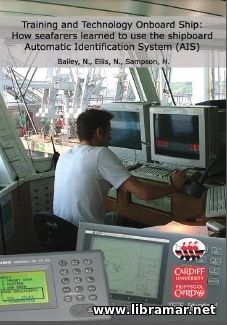 The present report is the first one in a series focusing upon the seafarers training relating to the introduction of the shipboard technologies and universal introduction of the AIS providing an excellent chance to perform the observation of the whole extent to which such training is accompanying the intro to the newly established onboard technologies.
Before the interviews with the seafarers have been conducted related to the training accompanying the AIS introduction, the authors of the preset volume has attempted to duly ascertain the level of the errors commonly identified and concerned with the information that is being transmitted using the AIS and treated this as a sort of the indicator of the seafarers competence.
The whole content of the report has been compiled on the basis of the data collected in the four-year period and it is intended to indicate the level of the errors made when using the AIS. The authors have also considered the extent to which subject system encourages the incorrect use of the VHF radio to avoidance of the collisions plus the implications of the subject factor for the training. The utilization of the VHF radio for negotiating of the collision avoidance between the vessels was considered a serious problem for long time and by numerous agencies dealing with the navigation...
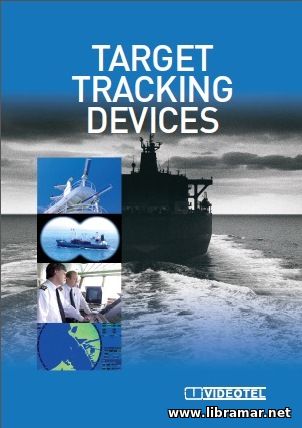 Under the new IMO performance standards relating to the shipboard radar equipment, all of them shall now be capable of displaying the AIS information; the term ARPA, in term, is planned to be replaced with the TTD, standing for the target tracking device. Nowadays, a broad range of such devices is available, and the personnel involved in operation of this equipment, shall be provided with the familiarization training at the time of the boarding, and such training shall be equipment-specific.
The present booklet shall accompany this video training film and is mainly intended to be used by the navigation officers to train the cadets and also to be used by all other people on board to get familiarized with the main issues related to the target tracking as applied to the collision avoidance. Maritime radars enable the vessels to pinpoint other ships and to locate the own position of the vessel relative to the landmarks.
The working principle of the radar consists of sending the beam radio wave pulses and amplification, processing and further displaying of the returning echoes - this allows the radio operator to "see" the ships which would normally not be visible due to the mist of fog, or lack of lighting. It shall be noted that the echoes from some targets may not be strong enough and therefore not display while other objects may be obscured...
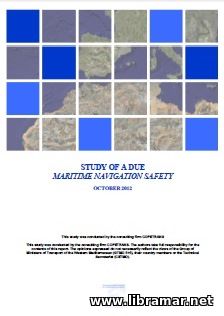 The aim of this technical study is provision of the specific and thorough analysis of all opportunities and of the legal/economic feasibility of implementing the safety due of the navigation, considered a transit charge that should be paid as necessary by all vessels that cross the waters of the coastal States, another aim of the compilers of the publication is to perform a professional estimation of the real contribution of such device to improving the capacities of subject countries in the surveillance of marine navigation, following the decisions of the GTMO 5+5 Ministers.
Among the purposes of this document we would definitely highlights the diagnosis of the systems of the navigation aids, analysis of the real needs (particularly funding needs), operational approaches and legal provisions, and also the possible implementations of the due for the vessels and coastal States, elaboration etc. Six major parts of this study are providing industry with virtually all required info relating to the international legal framework and legal feasibility, services required means/costs, characterization of the due, elements of the benchmark, and impacts. The annexes will provide the terms of reference, the questionnaire plus the actual status of the conventions, as adopted by the GTMO 5+5 members.
|







